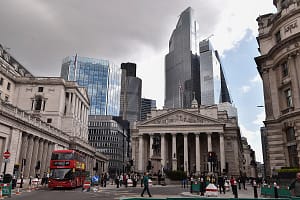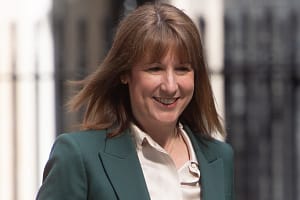The Bank of England is expected to leave its benchmark interest rate at 4% when the Monetary Policy Committee meets at 12 noon BST, and the odds of any additional reduction before year-end “appear slim,” predicts the CEO of global financial advisory giant deVere Group.
Markets have shifted decisively toward the view that August’s quarter-point cut will stand as a solitary move for 2025.
Headline consumer price growth remains lodged at 3.8%, almost twice the official 2% target.
Core inflation, which excludes food and energy, has eased only marginally. Food costs are rising more than 5% year-on-year, adding to pressure on household budgets.
These readings keep the Bank in a difficult position: inflation is not retreating fast enough to justify easier policy.
Nigel Green, chief executive of deVere Group, says: “Inflation hasn’t fallen in a way that allows policymakers to signal further cuts.
“The Committee will, we expect, hold the line to reinforce credibility.
“Markets should expect steady rates into the new year unless there’s a decisive downward break in the data.”
He adds that monetary policy will remain deliberately restrictive despite slower global growth.
“The US and euro area can move toward looser policy because their price pressures have moderated more convincingly. The UK cannot follow without risking a resurgence in inflation expectations.”
The implications stretch across asset classes.
Sterling
Nigel Green expects the pound to remain well supported against major currencies through the final quarter.
“Relative yield advantage is back on sterling’s side,” he notes. “If the Bank signals that rates stay high while the Federal Reserve and the ECB lean easier, the pound can grind higher against both the dollar and the euro. Volatility will stay elevated, but the underlying bias is toward strength.”
UK equities
A higher-for-longer stance favours certain sectors and challenges others.
“Companies with strong pricing power—energy producers, utilities, consumer staples—should continue to attract inflows,” says Nigel Green.
“Rate-sensitive growth stocks and highly leveraged real estate names face persistent headwinds as borrowing costs remain elevated.”
Bonds and gilts
The environment also keeps UK government bond yields appealing to global investors seeking income.
“Gilts will retain a premium over many developed-market peers,” Nigel Green explains. “But investors must focus on real, inflation-adjusted returns. If inflation stays stubborn, the yield advantage narrows.”
Property
Residential and commercial property markets will likely stay subdued.
“Mortgage costs will remain relatively high into 2026 if the Bank holds rates,” he predicts. “This limits price growth and keeps refinancing conditions tight.”
For international investors, the message is to treat UK-denominated assets as a distinct opportunity set rather than simply following global easing trends.
“Capital that flowed out of the UK earlier in the year on expectations of swift cuts will reassess,” Nigel Green says.
“Sterling assets offer income and a currency with scope to appreciate if the Bank maintains its stance.”
The deVere CEO concludes that the final quarter of 2025 will test how well markets have priced a prolonged plateau in borrowing costs.
“If the Bank signals an extended pause while the Fed and ECB continue to ease, sterling could push toward the upper end of its recent trading range—potentially $1.40 against the dollar and €1.20 versus the euro by year-end.
“Gilt yields are likely to stay firm, supporting income strategies, while UK equities will remain a story of selective strength, with exporters benefiting from a stronger currency and domestic retailers contending with tighter credit.
“Unless inflation shows an unmistakable downward break, policy will stay restrictive well into the first quarter of 2026, shaping every investment decision tied to the UK.”
Get real time update about this post category directly on your device, subscribe now.






Leave a Comment